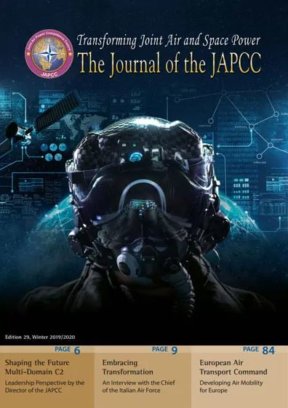Introduction
When thinking about satellite construction, most people envision multi-billion dollar projects and satellites which are equal to the size of a city bus. The satellite itself includes expensive equipment as well as propulsion systems, which are capable of manoeuvring to different orbits to avoid collisions with space debris or other assets. This was the case before the 21st century, when spacecraft had to be huge and only national space agencies were capable of funding such programmes, but now we are now entering into a new era where satellites are being built on a much smaller scale and can be constructed in just months.
What are Small Satellites?
Compared to typical satellites which have ranged in weight from 1,000 kg and up to 6 tonnes, small satellites are made with both a lower mass and smaller size. While there is no predefined dimensional requirement, the mass is usually less than 500 kg. Small satellites offer an alternative option for space agencies and companies due to the lower launch cost while maintaining similar capabilities to a larger satellite. Among the challenges engineers experience when constructing small satellites are the mass restraints of the spacecraft bus1. Such restraints thereby constrain the overall mass of the satellite; further restricting any propulsion systems placed on-board the spacecraft.2 For this reason, most of the current small satellites projects focus on orbiting in the Low Earth Orbit (LEO) with a few exceptions.3
One of the most dramatic changes in the space industry within the last ten years is the transformation from large geosynchronous communication satellites to a constellation of hundreds to thousands of small satellites, linking each other to provide a worldwide communication link in the LEO with a less expensive price tag. Due to the similarity and functions of each satellite in the constellation, companies and space agencies are able to produce the same item in a factory environment and produce the product at a much higher rate compared to the large satellites, which have to be custom-made to meet the requirements of different missions. While these smaller satellites are expendable and generally will deorbit within a year, they can be purchased and produced in bulk.4 With a short life expectancy of a year for small satellites at low altitude, it allows companies to upgrade and ensure the equipment on-board the satellites are most up-to-date as they are likely to be replaced within a few years.5
The cost of small satellites is also one of the major motivations for companies to adopt this new concept of satellite operations. The lowest production cost of a cube satellite6 can be as low as USD 50,000. This has attracted small business and universities to develop such assets for space environment assessments and for commercial purposes, which likely contributes to the increasing number of cube satellites in recent years.
The use of small satellites also eliminates the need for engineers to make long-term estimations for on-board equipment that will now be upgraded in the next iteration. In the past, engineers and scientists had to ensure that their equipment would last until the satellite reached its End of Life (EOL), normally anywhere from 10 to 15 years.7 Malfunctioning instruments would also shorten the length of the mission, causing millions of dollars of losses to companies or space agencies. Small satellites constellations can also provide redundancy and allow engineers to focus on short-term planning. Furthermore, these satellites will also remove the need for redundant payloads, which are used on-board large satellites to increase their survivability, as they can be covered by other identical satellites within the constellations.
Current Plans for Small Satellite Constellations
Since the production of a large number of small satellites in a factory environment will lower the cost of the overall programme, companies such as SpaceX, Amazon and OneWeb have been creating a satellite constellation within the LEO and Medium Earth Orbit (MEO).8, 9 OneWeb is a new company which plans to create an initial constellation of 648 satellites to provide global satellite internet broadband services. Each satellite weighs approximately 150 kg and will be programmed to operate in 20 different orbital planes at an altitude of 1,200 km.10 Creating a large constellation within the LEO could mitigate transmission delays and latency due to their closer range to ground stations while allowing users to send and receive data in a timely manner. The first six of the 648 satellites were launched in early 2019 with more launches scheduled to occur throughout this year.
Both SpaceX and Amazon have also announced their intention of creating a separate constellation for internet communication systems. SpaceX satellite constellations, named Starlink, will be the largest constellation ever built when it is completed. The constellations consist of nearly 12,000 satellites in more than 20 different orbital planes.11 The altitude of Starlink will range between 550 km to 1,150 km. SpaceX aims to have a minimum of 2,200 satellites in the next five years and achieve initial commercial operation by 2020.12 Amazon’s version of constellation, named Kuiper, has also been seeking approval from the Federal Communications Commission (FCC) to launch more than 3,200 satellites between 590 km to 630 km in the LEO.13
Space Debris Threat Increases in the LEO
The usage of cube satellite has provided positive impacts in various fields, ranging from environmental studies to offering worldwide internet access in rural areas through communication constellations. However, the current space environment is becoming congested. Hundreds of satellites have already been scheduled to launch each year before the construction of the constellation programme by OneWeb, SpaceX and Amazon. To further worsen the space debris situation in the LEO, direct-ascent Anti-Satellite Testing (ASAT) was conducted in recent years and more debris will be created through such testing. During the Chinese ASAT in 2007, some debris from the collision was blasted outward away from the Earth, causing a potential threat to satellites above the altitude where the ASAT testing occurred.14 Nine years after the incident happened, there are still more than 3,000 traceable pieces in orbit.
In 2009, two satellites collided at a speed of 10 km/s at an altitude of 800 km. This was the first time a collision had happened between two satellites. The incident created more than 1,000 pieces of debris larger than 10 cm. Such activity could initiate a chain reaction, creating more collisions from the initial impact. This phenomenon is known as the Kessler Syndrome.15
From early 2019, there were approximately 34,000 pieces of debris larger than 10 cm (similar to the size of a cube satellite) and more than 900,000 pieces of debris ranging from one cm to 10 cm in size. Objects that are smaller than one cm in size are expected to be more than 100 million within the LEO.16 Despite the small size of the space debris, they are travelling at a speed of more than seven km/s. At this speed, tiny objects could harm any large satellite orbiting in the LEO. While satellites can increase their physical hardening to protect the on-board instruments from impact, some satellites cannot be hardened due to the size and dimensional constraints. Furthermore, hardened materials would also increase the overall cost of the satellite.
Constellation in the Making Could Impact Space-Based Military Assets
The previous examples revealed the congestion of the LEO. With companies continuing to launch thousands of small satellites, the chances of a collision in space will continue to increase. This will hinder space-based Intelligence, Surveillance and Reconnaissance (ISR) support to provide valuable information to military operations. A majority of the ISR assets are orbiting in the LEO. NATO relies on space-based assets to assist its operations. Increasing the number of spacecraft in the LEO could raise problems and threats to military assets as well as access to space assets to support operations. If the orbital path of these smaller objects were not tracked by the Space Operation Centre regularly, larger satellites or manned-space stations could be penetrated by the non-propulsion satellites, making them a potential kinetic kill vehicle.
Most satellites within the 600 km region of the LEO are affected by the atmospheric drag, which is helping to bring down some of the obsolete satellites. However, satellites orbiting above 800 km are less likely to be affected by the atmospheric drag, making cube satellites or small satellites without propulsion systems difficult to deorbit once they have reached the EOL.17, 18 The altitude for some of the OneWeb, Starlink and Kuiper constellations is planned to be above the atmospheric drag region. Despite this, Starlink satellites will have propulsion system for orbital manoeuvre and EOL deorbiting, tracking the full constellation with 12,000 satellites could be challenging for the company and the Combined Space Operations Center (CSpOC).19 Additionally, there is the possibility of losing contact with satellites before they reach their EOL. Envisat, an 8,210 kg satellite that is currently drifting at an altitude of 785 km, poses a collision threat with other satellites. Envisat was expected to decommission in 2014 but the European Space Agency (ESA) lost contact with the satellite in 2012.20 If no interaction will be made with the Envisat, it is expected to stay in orbit for the next 150 years.21
With the reliance on space-based assets continuing to grow for both civilian and military uses, space will eventually become a more congested environment. The International Space Station (ISS) occasionally has to manoeuvre to different altitudes to avoid debris, which is drifting in the LEO. Debris of up to 1 cm in size could cause critical damage to the ISS. Debris up to 10 cm large could shatter a satellite.22 Furthermore, nations such as the United States and China are looking into Lunar and Mars exploration in the near future. The constellation surrounding the Earth could pose risks to interplanetary exploration missions. Extensive mission planning will be required to avoid debris collision with the crewed capsule.
The responsibility of CSpOC23 on Space Situational Awareness (SSA) will steadily increase as we experience more space launches and place more assets in outer space. SSA will provide valuable information on the position and size of the objects in space, whether they are debris or operational satellites. However, the chances of collision from debris will also increase, as there are also limited options for debris removal caused by EOL operation. The international community does have consensus on debris mitigation and finding possible ways of removing space debris, however, implementing these measures will be challenging for many nations.24 With private companies participating in the construction and launching of the constellation programme, space will continue to become a congested environment faster than ever before.












